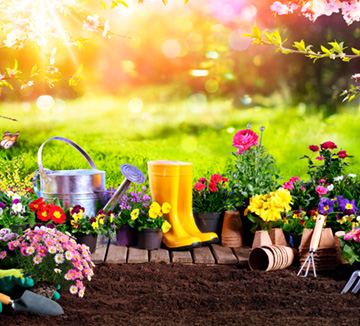
Plan your garden location
If you’re new to gardening, then it’s time to decide where you’ll put your garden. If you want to grow vegetables, then your garden needs to go in a sunny place. If you want to create flower gardens around your home, then pay attention to how much sun each spot gets so you can choose the right plants. If you want to add a patio in your garden, you may consider installing retractable awnings or some kind of cover. For larger landscaping projects, you may also need dump truck hauling services.
Know your planting dates
Part of being a gardener means learning more about your climate. It’s important to understand when you can start seeds so that young seedlings aren’t killed by frost before your new garden even gets started. Check the USDA growing zones map to find out your area’s first and last frost dates.
Browse seeds
One of our favorite things to do on a cold and dark winter’s night is to browse through seed catalogs. Dreaming about all the things that will be sprouting from the ground in just a few months can get you through the rest of winter. Choose seeds that are appropriate for your conditions so you’re sure to have the best outcome.
Consider your garden layout
It can be helpful to draw up a simple diagram to determine the layout of your garden. Think about companion planting so that you’re putting plants side by side that grow well together. It will also give you a better sense of how much room you have so that you don’t buy too many seeds or seedlings. Your layout will also serve as a guide if you want to build a Professional Wood Fence Installation around your garden.
Purchase supplies
Sure, you can wait until spring to order fertilizer, but why wait? You’ll thank yourself later when spring suddenly arrives and you have everything you need to get started. This includes pots, soil, pruners, and gloves, among others.
Think about compost and water
One of the easiest ways to improve your garden is to use things you already have. Do you save kitchen scraps and yard waste to compost? If not, then you should consider it. Compost will greatly improve the quality of your soil and keep waste out of landfills. Do you save rainwater? If not, then think about setting up a rain barrel or two in your garden. Rainwater is better for your plants than tap water and you’ll save money in the long run by not using the garden hose to water your plants during dry spells.
Get your tools ready
There’s nothing better than having clean, sharp tools at your fingertips. If you didn’t clean and sharpen your tools this fall, then get a jump on it now.
Prepare for a late frost
Most gardeners are enthusiastic about getting their spring gardens started. But that can mean an unexpected late frost takes out your plants. Prepare for a late frost by gathering old sheets and towels that you can use to cover tender plants on those nights that dip below freezing.
Compliments of Virtual Results


